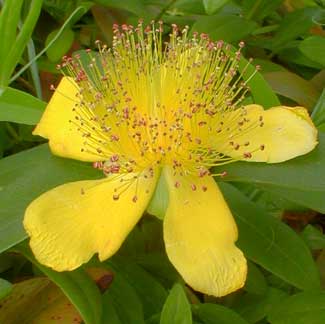Aaron’s beard (Soleirolia soleirolii) also known as baby’s tears is a stunning trailing plant with delicate foliage. However, like all plants, it has specific watering needs. Learning how to tell if your Aaron’s beard plant needs water can help ensure you meet its requirements. Underwatering can cause stress, while overwatering leads to root rot. By recognizing when to water, you can keep your plant happy and healthy.
In this article we’ll explore 10 clear signs it’s time to give your Aaron’s beard plant a good drink. With these tips you’ll no longer second guess if your plant is thirsty.
1. Dry Soil
One obvious indicator your Aaron’s beard needs water is dry soil. Stick your finger into the potting mix about an inch deep. If the soil feels completely dry and crumbly, it’s definitely time to water. Aaron’s beard likes consistently moist soil, but not soggy. Let it partially dry out between waterings. If the soil is bone dry, however, the plant is stressed.
2. Soil Pulling Away From Sides of Pot
Over time, repeatedly allowing the soil to dry out excessively can cause it to shrink and pull away from the edges of the pot. If you notice a visible gap between the soil and the pot, your plant is clearly underwatered. The soil has become hydrophobic and repels water, so give it a deep, thorough watering to rehydrate it completely.
3. Leaves Feeling Thin and Brittle
Healthy Aaron’s beard leaves feel juicy and supple. If the foliage feels thin, brittle or crunchy, it likely needs water immediately. The leaves are losing moisture faster than the roots can supply it. Brittle leaves that crumble easily are a surefire sign your plant is dehydrated.
4. Wilting or Drooping Leaves
When the soil gets too dry, Aaron’s beard will start to wilt as it can no longer support its leaves’ moisture needs. The leaves and stems will become limp, flag, and begin to droop. Don’t let it get to this point – water at the first sign of slight wilting. Severe wilting can damage the plant if left untreated.
5. Leaves Curling Inward
In an effort to conserve moisture when underwatered, Aaron’s beard may start curling its leaves inward. The plant is trying to decrease surface area and limit water loss through its leaves. Leaves that are curled under or rolled lengthwise need a drink right away.
6. Few New Leaves
A dehydrated Aaron’s beard invests its energy in survival, not new growth. If your plant seems to have stalled and isn’t producing many new leaves lately, low water may be the reason. Well-watered Aaron’s beard is vigorous and pushes out trailing stems and leaves rapidly.
7. Leaf Tips Turning Brown
When underwatered, Aaron’s beard will sacrifice its leaf tips first The cells die off and the tips turn crispy and brown. It’s the plant’s way of preserving water by isolating the damage Letting the leaves get this dry risks long-term harm, so water immediately when you notice browning tips.
8. Light or Darkened Foliage
Dehydration causes Aaron’s beard leaves to gradually lighten or darken from their healthy green color. Slowed photosynthesis due to low water causes chlorophyll depletion, turning the leaves pale. Severe drought can cause leaves to turn yellow, brown, or black.
9. Leaf Drop
In extreme cases of prolonged underwatering, Aaron’s beard will start to sacrifice entire leaves to retain moisture in the remaining ones. Too many old, dry leaves continuing to transpire will only sap the plant of water. Partial or complete leaf drop signals an urgent need for watering.
10. Checking Soil Moisture
The most foolproof way to assess if your Aaron’s beard needs water is to check soil moisture levels using a moisture meter. This takes the guesswork out of deciding when to water. Insert the probe into the soil and read the results. Below 40% indicates it’s time to water your thirsty plant.
Now that you know how to read Aaron’s beard’s signs of thirst, you can confidently meet its watering needs for luscious growth. Allow the top one inch of soil to dry out between waterings, then soak thoroughly. With proper moisture, your trailing plant will thrive!

Planting and Growing Bluebeard
You’ll find everything you need to know to plant and grow Aaron’s beard, creeping St.-John’s-wort, or gold flower in the accompanying table’s tabs:
-
- Flowers, foliage, pods, and seeds of Aaron’s beard, creeping St.-John’s-wort, or gold flower
- Growing conditions for Aaron’s beard, creeping St.-John’s-wort, or gold flower
- When and where to plant Aaron’s beard, creeping St.-John’s-wort, or gold flower
- How to plant Aaron’s beard, creeping St.-John’s-wort, or gold flower
- How to shape, prune and control growth of Aaron’s beard, creeping St.-John’s-wort, or gold flowera
- Watering, fertilizing, and care of Aaron’s beard, creeping St.-John’s-wort, or gold flower
- Landscape uses of Aaron’s beard, creeping St.-John’s-wort, or gold flower
- Pest and disease control for Aaron’s beard, creeping St.-John’s-wort, or gold flower

Several cultivars of long-lived, fast-growing, prostrate, spreading, stoloniferous, evergreen perennial shrubs or ground covers, to 3 ft. (90 cm) tall and 24–36 in. (60–90 cm) wide, depending on cultivar. Opposite, smooth, green, lance-s haped, pointed leaves, to 4 in. (10 cm) long, with pale green, veined undersides.
Aaron’s Beard Planting and Care Guide

Many showy, gold, yellow, 5-petaled, open, round flowers, to 2 in. (50 mm) wide, with feathery centers of erect stamens, in summer.

U.S.D.A. Plant Hardiness Zones 5–10; ground hardy, zones 5–10.
FOUR Ways To Tell If Your Garden Needs Water
FAQ
How do you care for Aaron’s beard plant?
Is Aaron’s beard invasive?
Is Aaron’s beard deer resistant?
Is Hypericum calycinum poisonous?
